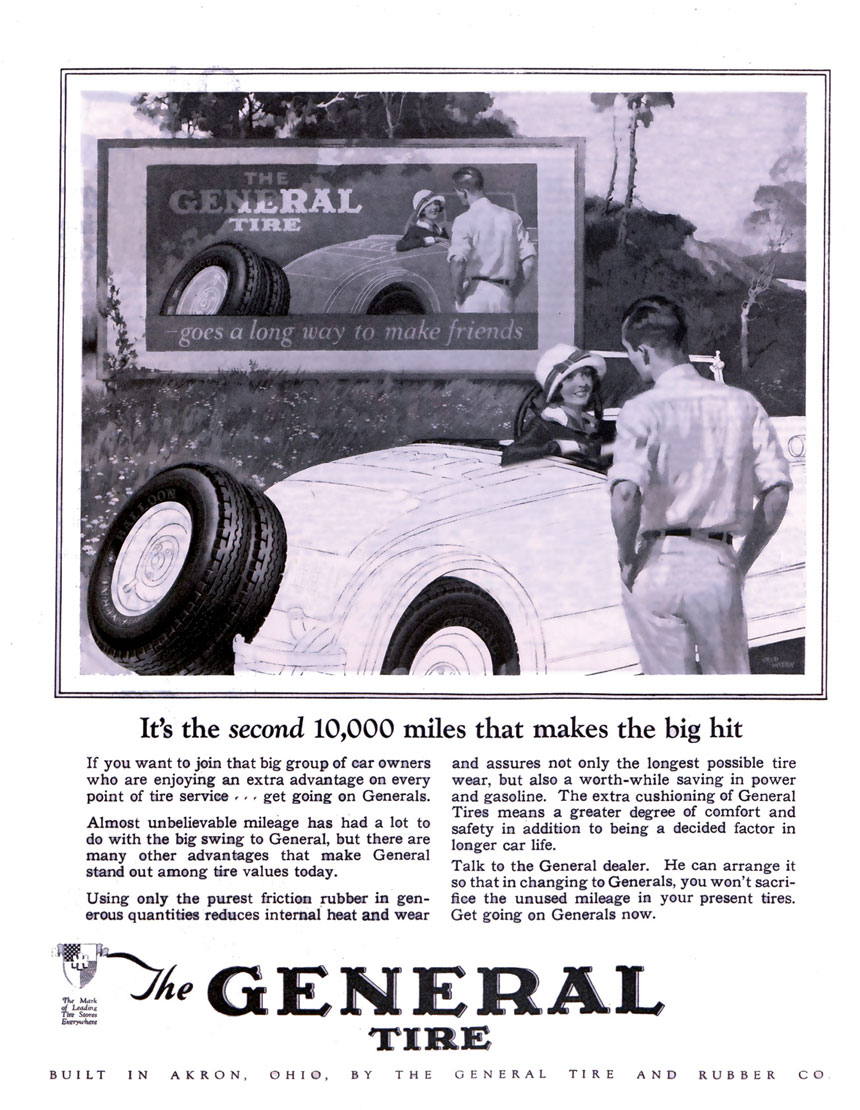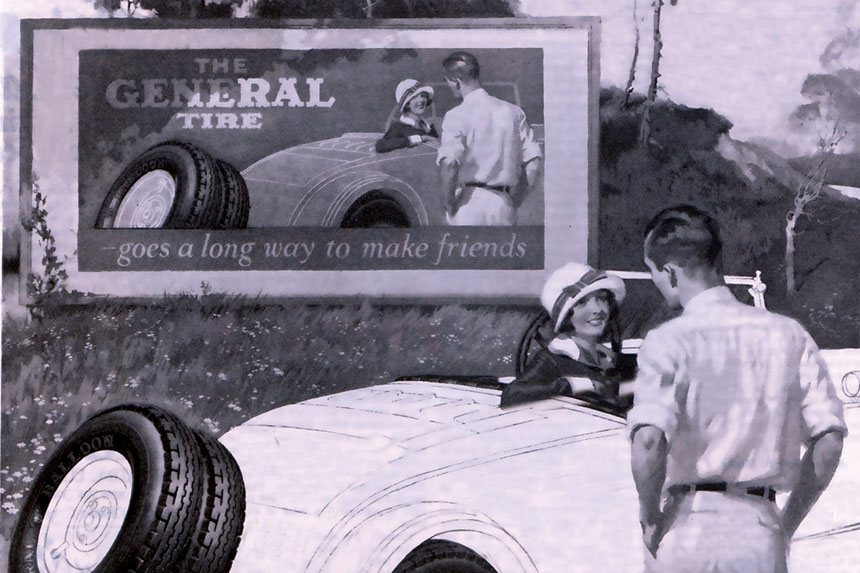Rubber tires were a late development in the auto industry. The earliest automobiles traveled on carriage wheels, which were usually spoked, wooden wheels encircled by a single leather band for traction and a little shock absorption.
Rubber tires became a possibility with the discovery of vulcanization, a chemical process that made rubber more resistant to extreme heat and cold. Solid rubber tires were soon replaced with pneumatic models whose air-filled inner tube made the ride far more comfortable.
As cars became heavier and more powerful, they required stronger tires. So they were stamped with tread patterns that increased durability, absorbed the shock of the road, and protected the inner tire surface.
By the 1920s, tires were made with layers of fabric or leather encased in rubber. Even so, flat tires were still common with most brands. Which is why this 1926 ad from The General Tire & Rubber Company was so remarkable. It implied that its tires could last 20,000 miles at a time when the average tire survived just 1,000 miles before needing repair or replacement.
This article is featured in the March/April 2024 issue of The Saturday Evening Post. Subscribe to the magazine for more art, inspiring stories, fiction, humor, and features from our archives.
Become a Saturday Evening Post member and enjoy unlimited access. Subscribe now




Comments
I just wish motorcycle tire technology would improve to the point where I’d get more than 12000-16000 per set. Per tire the cost is much greater for quality like Dunlop or Bridgestone. Owning a Gold Wing is expensive but the benefits are worth it.
The rubber tire technology here (specifically vulcanization) came about when it was really needed for the cars of 1926 and later. To have tires last 20,000 miles vs. only 1,000 up to that point really was a revolutionary breakthrough. I would imagine for most motorists, that would be at least 3 to 4 years if driving 500 miles a month.
The billboard of the main picture in the background is very clever. The car is definitely art, but the people and background look like photography, at least at first. Upon closer study though, it does appear to be artwork also.